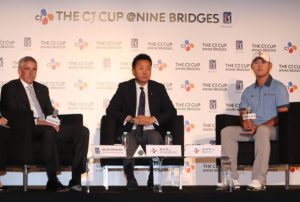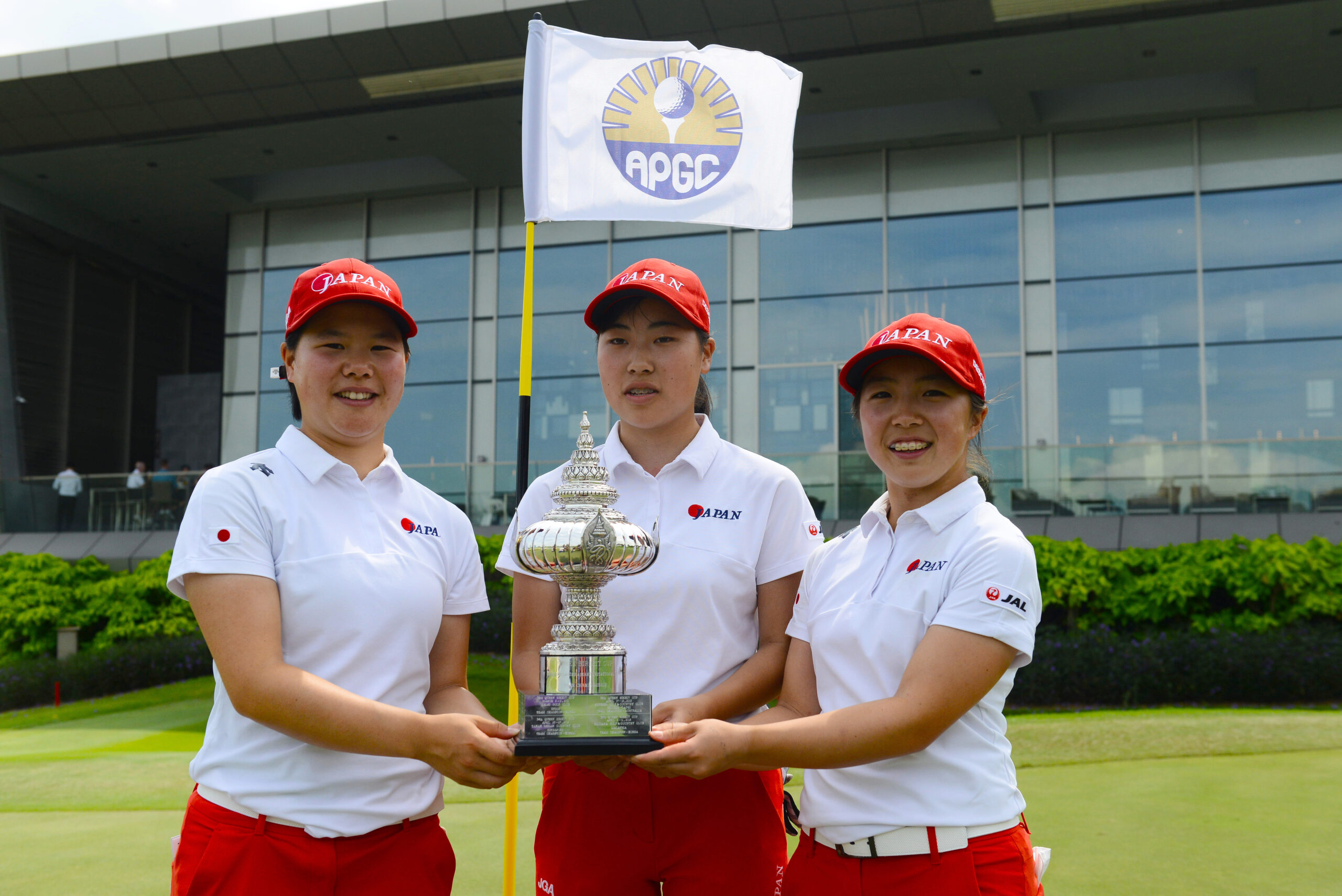By Michael Wilson
Having sated itself with season-long prize money in approaching US$350m, including the recently completed FedEx Final Series offering US$35m in prize and bonus money, the avaricious PGA TOUR this month turns its attention to Asia, with two events offering its members a King’s Ransom of nearly $20m, but in a territory which, by rights, it has no business being in.
When the PGA TOUR shouts, ‘Jump,’ the reaction of the rest of men’s professional golf circuits have traditionally answered, ‘How high?’
And that’s the case again this year when, announcing its all-new 2018 / 19 schedule, the European and Asian Tours have little or no alternative but to comply with its significant knock-on effects.
The PGA TOUR’s unilateral decision to bring forward the prestigious US$11m Players Championship, widely regarded as the, ‘Fifth unofficial ‘Major,’ from May to mid-March is arguably the least contentious of the PGA TOUR rescheduling, which retains the autumn-to-autumn cycle as opposed to following the calendar year. 
And advancing the USPGA Championship from August to mid-May, making it the second rather than the final ‘Major’ of the season gives the European Tour a serious headache, forcing its flagship event, the BMW PGA Championship at Wentworth almost inevitably into an autumnal slot.
However, it is the season-concluding FedEx Cup, this term a three-event denouement rather than four, all starting and finishing in August that could cause the greatest degree of upheaval, the month of September yet to be filled, raising suspicions that the Ponte Vedra Beach outfit could be planning a series of offshore events, most probably in Asia.
Already, the die has been cast with the PGA TOUR moving unilaterally into Asia, first with the generously-funded CIMB Classic, followed by the near US$10m CJ Cup @ Nine Bridges in Korea, the former at least co-sanctioned by the host Asian Tour, the Korean showpiece solely for a limited field of privileged PGA TOUR professionals, with the token gesture of a handful of young ‘home’ players to tick the golf development box.
In theory, the body set up to arbitrate and oversee the fair treatment of each of its member organizations, is the International Federation of PGA Tours, but, sharing an office cheek-by-jowl with the PGA TOUR, this is an organization without teeth and an apparent disregard for the majority of its members, in particular the European Tour and the Asian Tour whose backyard the dominant PGA TOUR has no compunction in invading with impunity.
With both the European and Asian Tours suffering – directly and indirectly – at the hands of the expansionist intentions of the dominant PGA TOUR, that prognosis could, in theory at least, be applied to the LPGA Tour, which this term has no fewer than eight tournaments in Asia.

However, with the Ladies European Tour still in intensive care following this year’s near-death experience and the Ladies Asian Golf Tour falling off a proverbial cliff since its 10 tournament high-water-mark of 2014, the LPGA is the only show in town.
Meanwhile, as the PGA TOUR marches through Asia seemingly without a care for local or regional professional golf, it too may prove vulnerable to the much publicized World Golf Series.
In May this year, the UK-based World Golf Group went public, claiming it had been working-up the concept for over a year, aiming, predicted for between 15 and 20 tournaments around the world each year, each event offering a prize purse of around US$20 million, according to Richard Marsh, a spokesperson for the shadowy group which is not even registered with British business authorities.
Were such a development to succeed – and all the key commercial performance indicators in men’s professional golf would suggest such a World Golf Series on this scale is little more than a pipe-dream – then even the hitherto domineering PGA TOUR would have to look to its laurels to remain relevant and viable.
Whilst it is clear that the PGA TOUR’s Asian adventure is primarily aimed at benefitting its own members, especially those who are either keen to make the big time – and bucks – and those who once did so and would like to again, it is only fair in recognizing a degree, however modest that may be, of altruism on its part.
However, until such time as the PGA TOUR recognizes, first, that its business model and golfing offer does not export well beyond the 50 states, Canada and a few US dependencies around the world, where local, regional, national, collegiate, ethnic, racial and other allegiances bind the players to the circuit, on course, on TV and online.
And, like any parasite and host relationship, (and perhaps the term ‘parasite,’ may in this case be a touch harsh on the PGA TOUR), in order for there to be a mutually-beneficial, long-term relationship, both the party whose blood is being sucked and the bloodsucker have to co-exist and benefit from a symbiotic sustainable affiliation.
Sadly, the Asian Tour, for many the most friendly, cosmopolitan and colourful men’s pro circuit in the game, despite having all-but seen-off the ill-judged OneAsia remains relatively weak, its most recent CEO Josh Burack quitting after an unfruitful two years.

Now, to have the PGA TOUR blundering into Asian Tour territory with events such as the CJ Cup with no place for players from the home circuit can only inflict further damage on the game in a part of the world where both economic and sporting growth continue apace, the most sustained growth in flat-lining global economy.
Oh for an authentic, properly-constituted and above all independent International Federation of PGA Tours, ideally an organization where the Asian Tour is treated on a par with the PGA TOUR, where the Sunshine and Australasian Tours were the equal of the European Tour, and call a halt to the US anarchy where the PGA TOUR can – and does – act not only with impunity, but also with apparent contempt towards its fellow federation members.









